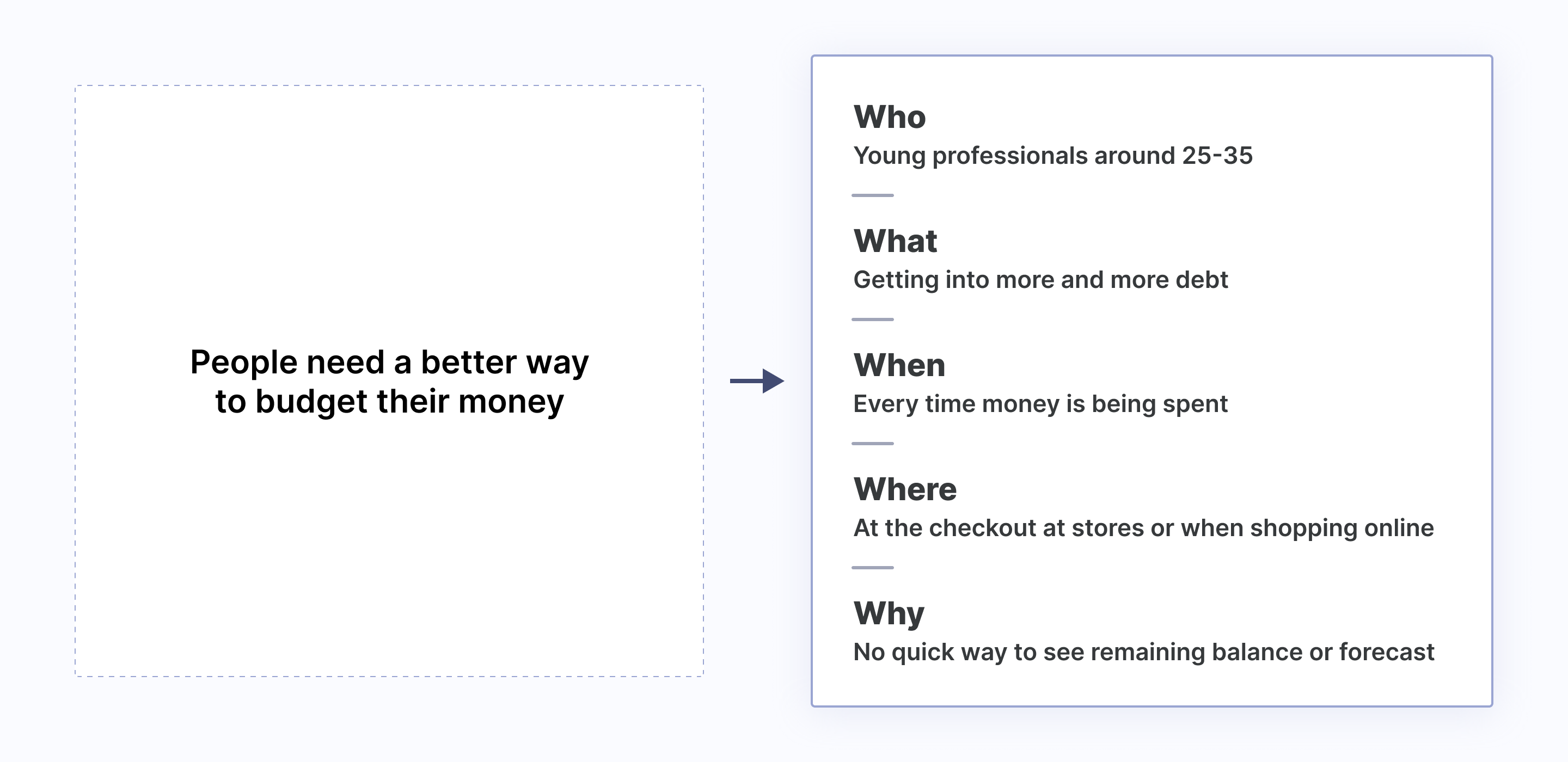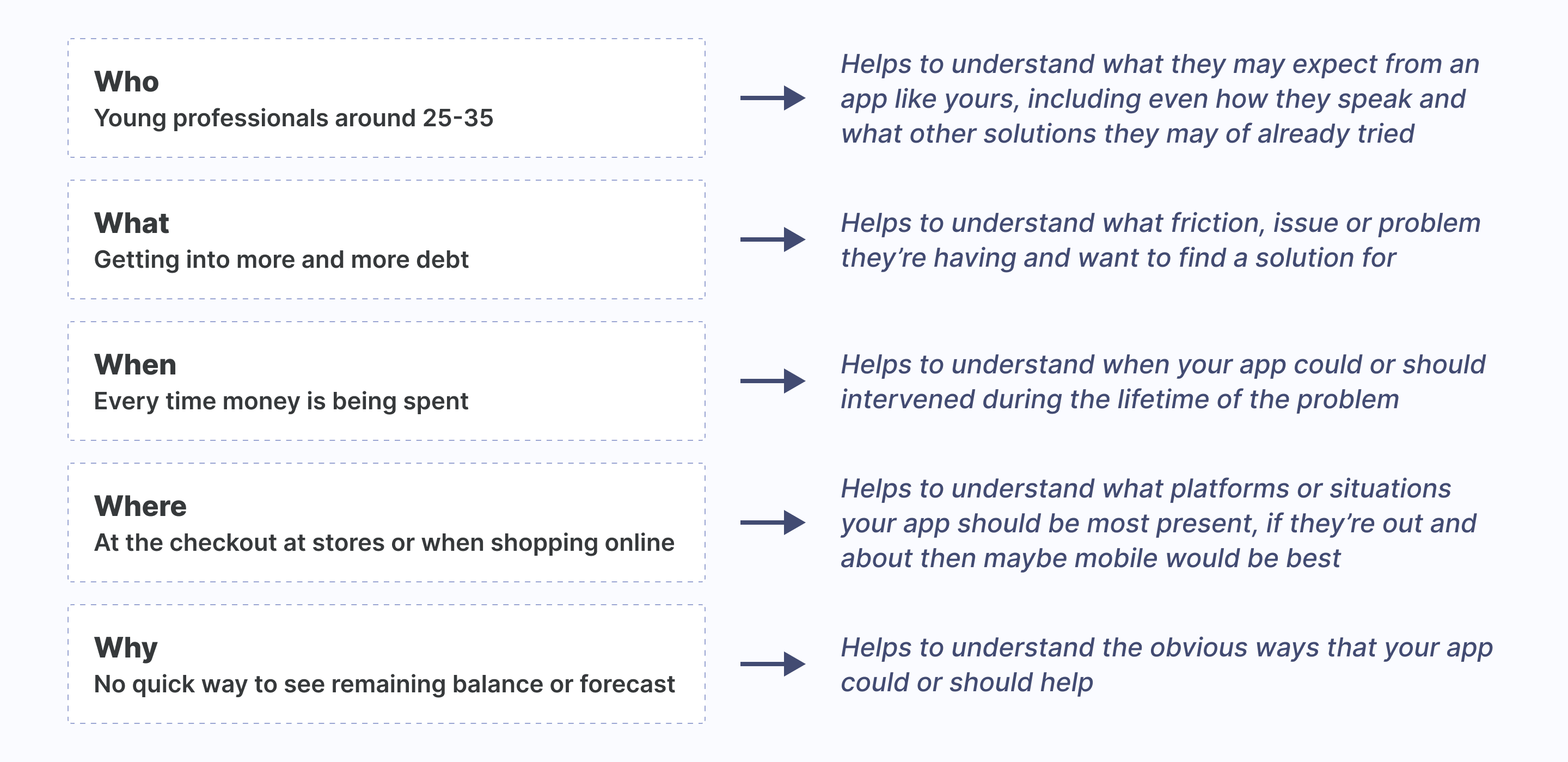2 — Find your user’s positive outcome
You’re building something because you believe there is a problem to solve. A clear problem is the cornerstone to any design endeavour and, no matter how far along you are, it’s important to check in constantly to ensure the problem you’re solving is super clear. Directly and indirectly, it will affect everything else you do.
“If I had an hour to solve a problem, I’d spend 55 minutes thinking about the problem and 5 minutes thinking about solutions.” — Albert Einstein
You may feel you have the problem locked down already but answering a few questions can really help make the problem clearer in your mind.
- Who — does the problem affect?
- What — is the issue they’re facing?
- When — does the issue happen?
- Where — does the issue happen?
- Why — is it important that it’s solved?


When defining the problem more, it should help to bring clarity to the overarching goal of the user. There is an end state that they want to get to and your app should be there to help. By digging deeper on the Why though, thinking about it from the emotional standpoint, what anyone really wants is a positive outcome at the end of it.
For a budgeting app, the ultimate goal may be to: “Spend less money than we earn” but the positive outcome is: “I want to feel more in control of my money”. It’s the positive outcome that is fueled with emotional charge. Money can be stressful and induce anxiety for many people. If you see your bank balance hurtling down to zero every month, it can feel uncontrollable. I’d argue that the reason people use budgeting apps is to experience the outcome of feeling less anxious.

Takeaway
Answering the who, what, when, where and why of the problem can help reveal the goal but it’s important to think about why that goal actually matters to people. You’ll usually find it’s charged with emotion and you can use that as framing for all future app making decisions.
Further learning topics: Problem Statement, User Personas, User Outcomes, User Goals

